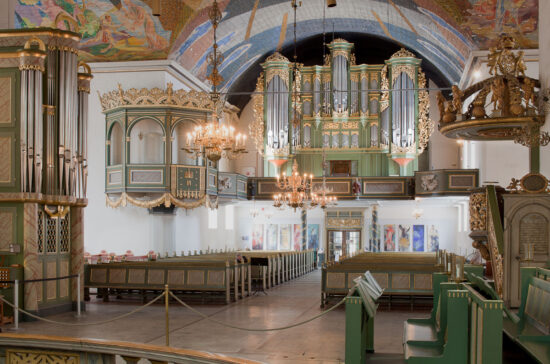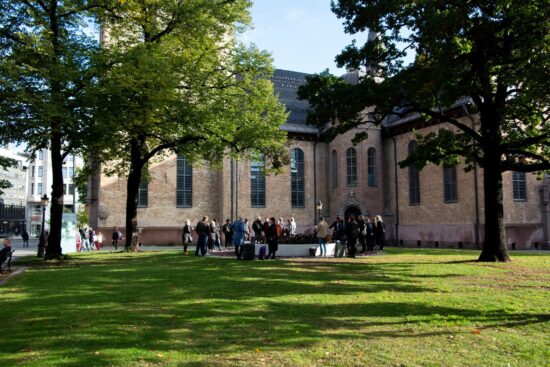Oslo Domkirke
To find Oslo Domkirke we move north from the National Opera & the Bjørvika bank we come across Oslo’s Central Station. If we take Karl Johans gate & move west we will come across the Stortorvet (Grand Plaza) square where one of Norway’s oldest shopping malls, the GlasMagasinet, and the Norwegian Cultural Heritage building of the Stortorvets Gjæstgiver restaurant stand over the dozens of flower stalls that occupy the pedestrianized little square or the stalls occupied by artisans and craftsmen in what is known as the Kirkeristen. It’s where you will also find the city’s cathedral, Oslo Domkirke.
Oslo Domkirke (formerly the Church of Our Saviour) is a Dutch baroque cruciform church. It is the city’s third cathedral and was consecrated on All Saints Day on November 7th, 1697 by Bishop Hans Rosing (d. 1699). The church is the main church of the Oslo diocese, established in 1076, and the parish church for the Cathedral parish established in 1694. It is also Norway’s official church, with the Palace, the Parliament, and government buildings within its parish boundaries.
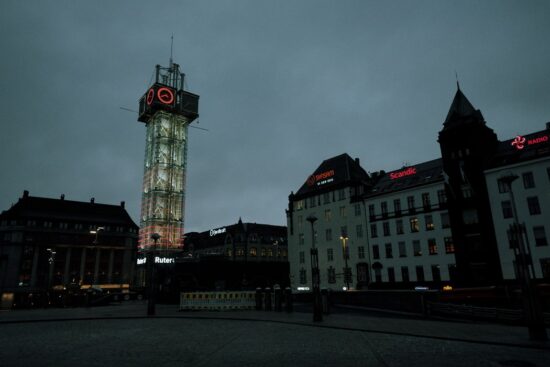
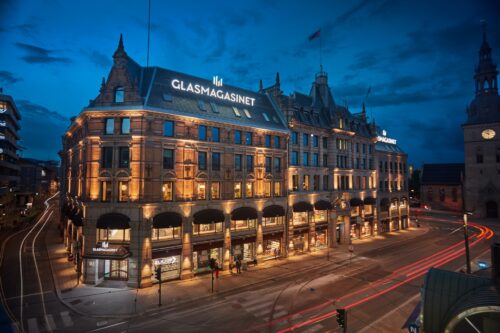
Many national, parliamentary, and royal events have been celebrated and marked here It is assumed that the church was designed by Councillor of State de Wiggers, who was also in charge of parts of the building work. The cornerstone was laid down in 1694. At the time, money was short in the Kingdom of Denmark-Norway and consequently, the church was built without much external decoration or detail.
When the church was consecrated in 1697, construction costs came to barely 15 000 riksdaler – less than half the cost of the Holy Trinity Church, Oslo’s second cathedral, 60 years earlier. The royal monogram of Christian V (Danish-Norwegian king 1670-1699) can be seen above the South entrance, together with the King’s motto, I E P – Justitia Et Prudentia, Justice and Courage. The King’s monogram is also seen above the entrance to the sacristy on the North side of the church: CV 1699.
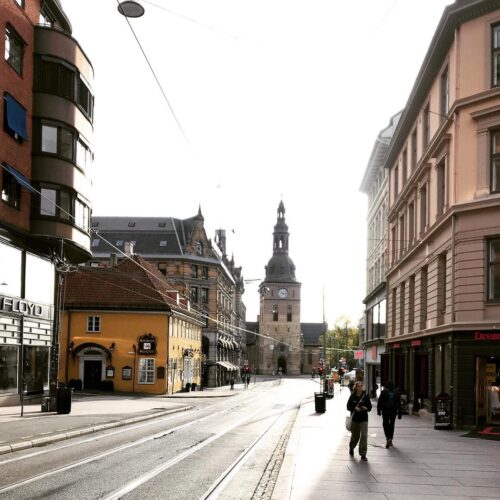
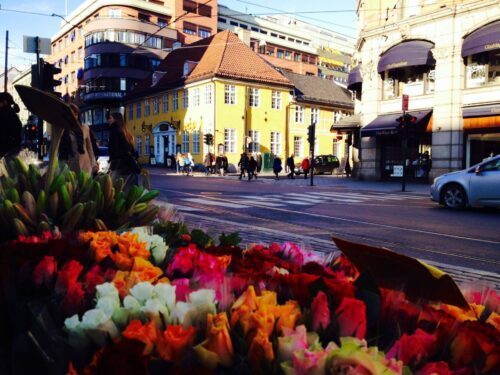
The nave runs from East to West, with the altar to the East and the organ to the West. The transepts follow a North-South direction. The main building material is Dutch brick, and the fill for the walls was taken from, among other places, the ruins of the Holy Trinity and Hallvard churches, the town’s two first cathedrals.
Women carried out the bulk of the construction work. The church was painted by the customs of the day, with blue foundations and layered yellow and red brickwork. The tower was originally several meters lower than it is today and did not have a spire.
When the church was consecrated, it still lacked the liturgical furnishing and only the altar was in place during the service, covered with a repaired lace cloth that had been plucked from the burnt Holy Trinity Church. The three brass chandeliers that had also been salvaged from the ruins hung in the central aisle. Work on the interior continued for several years.
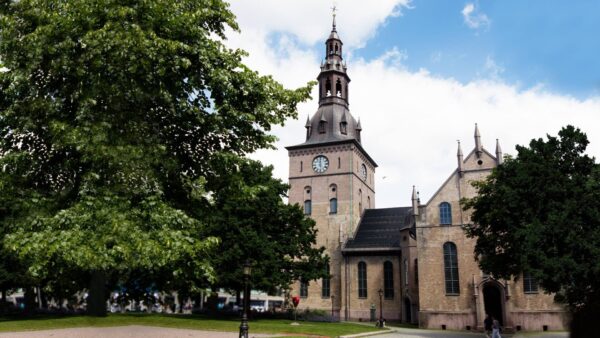
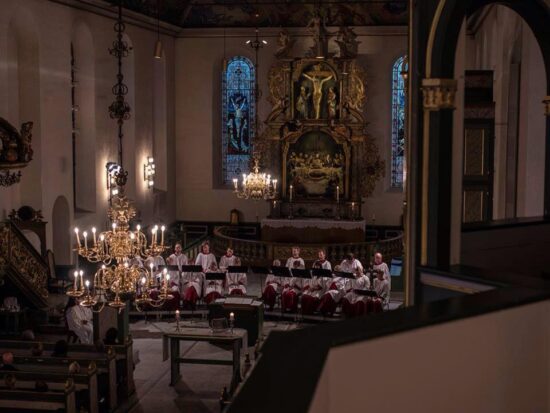
The town’s upper classes donated generously to the liturgical furnishings and the pulpit was completed in 1699, the year after the altarpiece and the royal gallery. In 1702, the first, if not the best, organ was ready for playing. The Great Nordic War (1709-1720) then put a stop to any further work.
The interior was finally completed in the 1720s, with a new organ, galleries, and bays along the walls. The church clock was installed in 1718 and is the oldest working church clock in Norway today. Its tower was rebuilt in 1850, while its interior was renovated soon after the end of WWII.
Notable features include the main doorway with its decorated bronze doors, as well as the ceiling paintings by H. L. Mohr, the Baroque pulpit and altar (1699), and the stained glass by Emanuel Vigeland. After the terrorist attacks on Oslo in July 2011, the square Stortorget, in front of Oslo Cathedral, became the center for afterthought and compassion. The square was fully covered by roses, greetings, and mourning messages for weeks.
